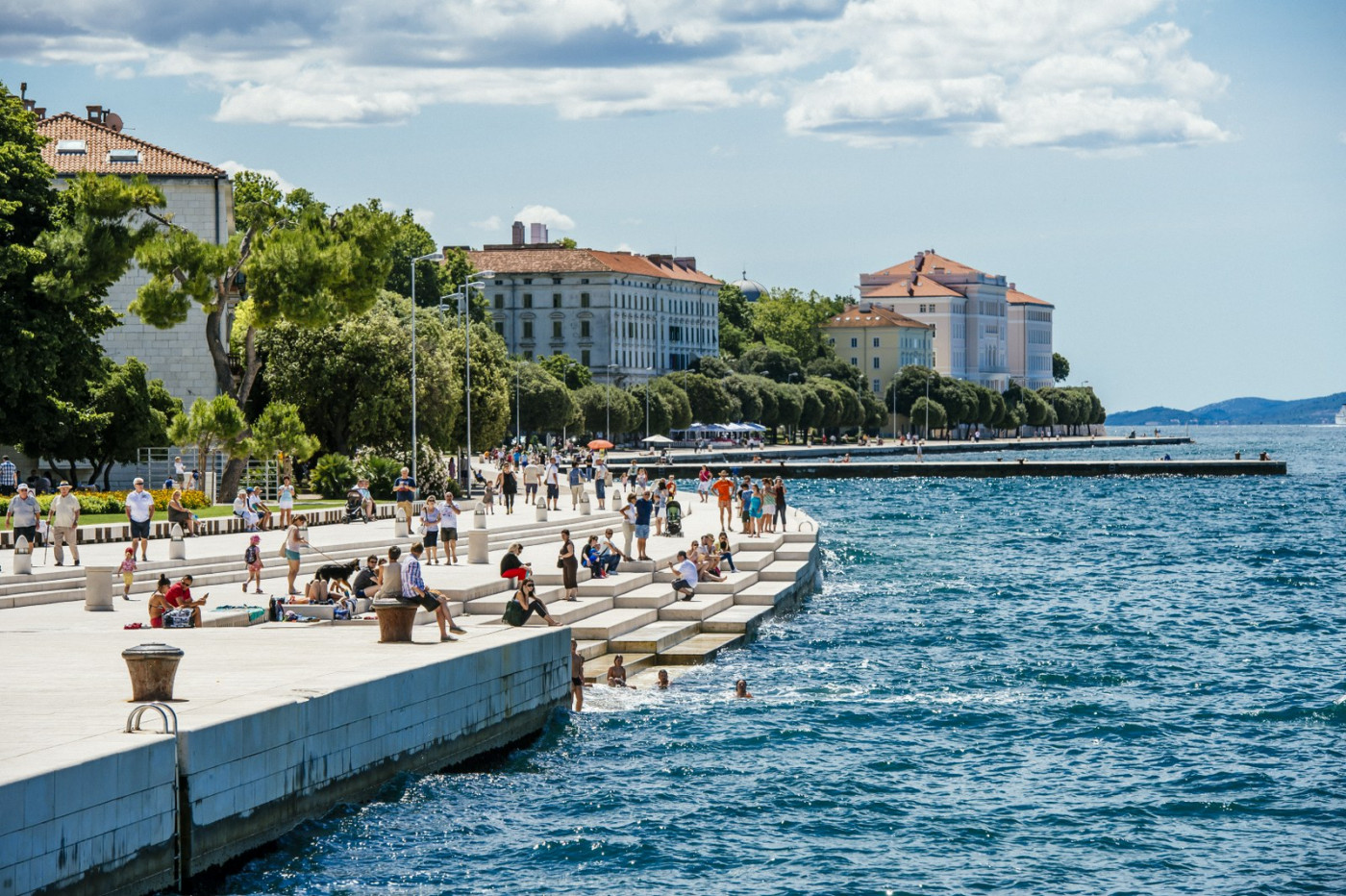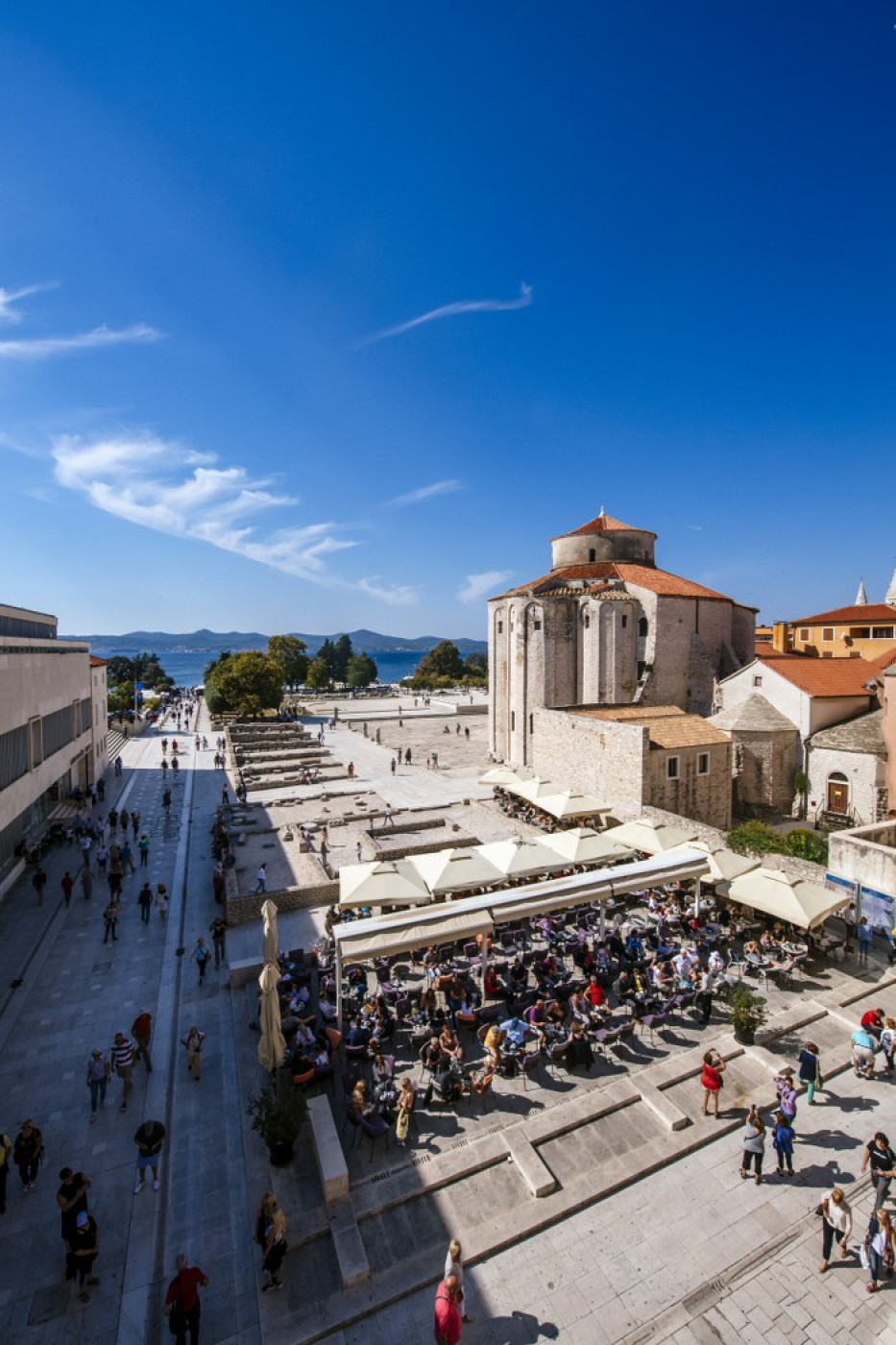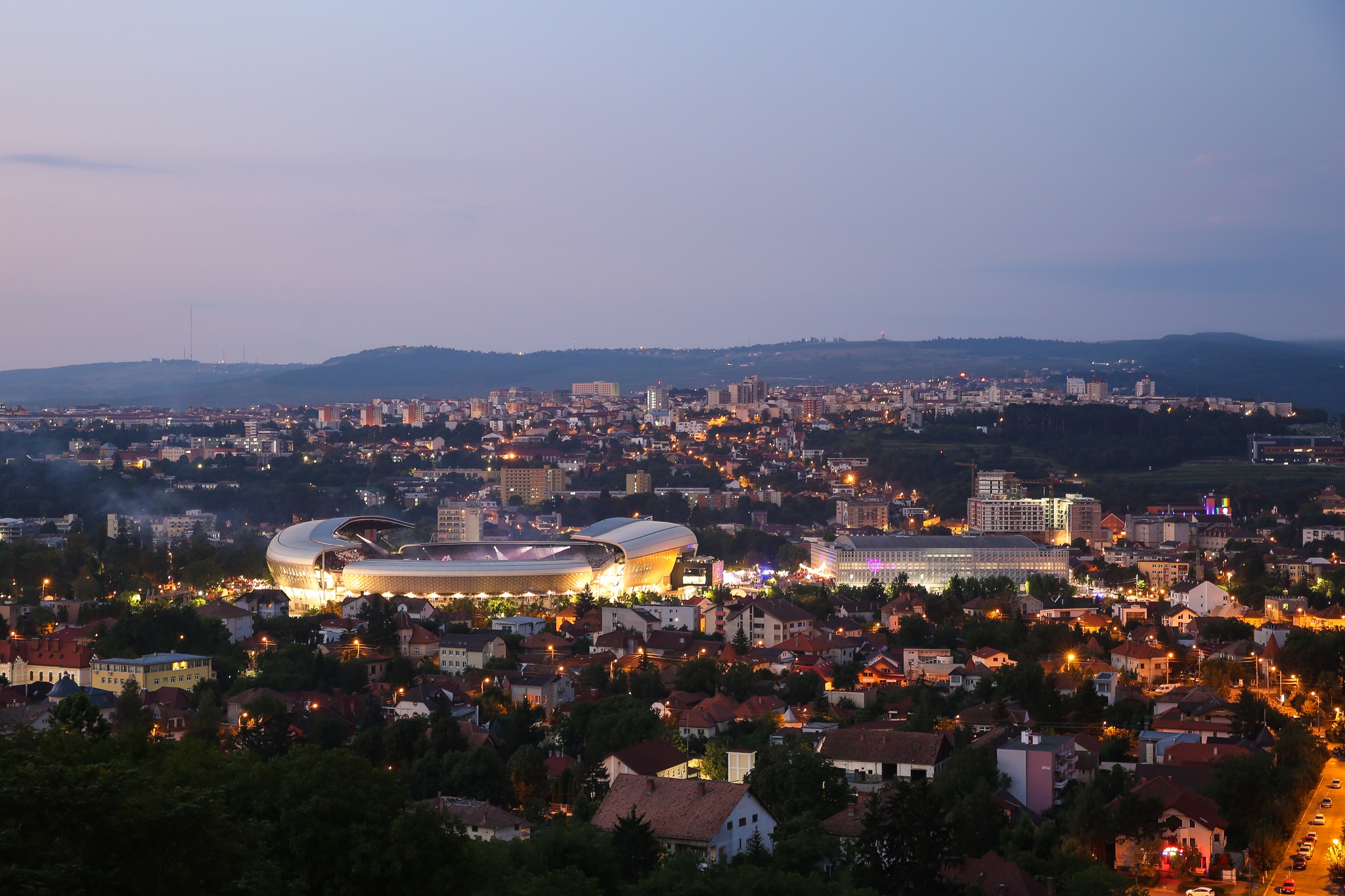Milena Rašić"Excitement is huge - there is nothing better than playing in your own country! That is one of the advantages. I am really happy and excited that EuroVolley is coming to Serbia again 10 years later."
Vice Captain
City | Beograd (Belgrade)
Belgrade is situated in South-Eastern Europe, on the Balkan Peninsula. It lies at the point where the river Sava merges into the Dan-ube. Because of its position it was properly called “the gate” of the Balkans, and “the door” to Central Europe. From Kalemegdan, along the Knez Mihailova street, across Terazije to Slavija, stretches the main city traffic artery.
Belgrade is the intersection of the roads of Eastern and Western Europe. Belgrade lies on the Danube river, the sailing route, which connects the Western Europe and Central Europe countries with the countries of South-Eastern and Eastern Europe.
There were 2.576.124 citizens in the larger-city area, and 2.273.651 citizens in the inner-city area.
There are about 1.000 sport facilities covering the whole territory of Belgrade. They are equipped for almost all present sports, at all levels of com-petition. Belgrade has hosted many important sport events, and Belgrade sport clubs have been European and World champions.
Belgrade is one of the oldest cities in Europe. Its history lasts full 7,000 years. Vinča near Belgrade comes among the most important settlements and cultural sites of the prehistoric period. The presence of Illyrians is characteristic for the Bronze Age. The archaeological excavations at Rospi Ćuprija, Upper Town, Karaburma, Zemun and Vinča confirm hypotheses that the Belgrade area has been intensively inhabited and that its population has been engaged in plough agriculture and other supporting economic activities. Necropolises of the Bronze and Metal Ages as well as the evidence of different cultural influences have been discovered at these locations.
Milena Rašić"I just wish that situation with covid 19 will calm down a bit and let people come to the gym and support us. It means a lot to all of us. They can expect that we’ll give our best and make them happy and proud once again."
Vice Captain
Venue | ŠTARK ARENA
Štark Arena is the largest sports hall in Belgrade with a universal hall for all sports events: basketball, handball, volleyball, tennis and athletics. When needed, it can be turned into an ice hall, hall for cultural events, as well as for concerts. Total surface area of the hall is 48,000 m2 and it has between 20,000 and 25,000 seats for visitors and the state-of-the-art equipment for all scheduled events.
How to get there?
Address: 58 Bulevar Aresenija Čarnojevića St.
City bus lines that have stops near the Arena are: 17, 18, 67, 68, 74, 88 и 601. Bus lines which are within the walking distance of Arena: 16, 65, 68, 71, 75, 94 и 95.
Tram lines which have stops relatively close to the Arena: 7, 9 and 11.
Elitza Vasileva"I deeply hope that everything will be all right again for EuroVolley. Plovdiv is such a beautiful city and the fans will enjoy one big sporting show. It will be a memory for life. The whole Bulgarian team cannot wait for the tournament to begin. We have waited it for all our lives. I am sure that with the help of the fans we will represent Bulgaria at the best possible way. The athmosphere in Kolodruma is unique. I believe that we will answer the expectations and we will give joy to all!"
Bulgaria Outside-Spiker
City | Plovdiv
Plovdiv is the second largest city in Bulgaria with a population of 368,469 people, accounting for 4.6% of the total of the country. The city is built at the foot of the seven hills , which is why it is often called "The City in the hills" or "seven hills".
Situated in the west of the Bulgarian part of Thrace, through it is passing the largest river in Bulgaria - Maritsa . So naturally the city is divided into two parts. North of Maritsa is located only region " North '' , also known by its old name Karshiaka and to the south is the main part of the city.
Throughout history Plovdiv bore different names: Kendrissos , Evmolpias , Philippopolis, Pulpudeva , Trimontsium , Ulpia , Flavia Julia , Plapdiv , Puldin Ploudin , Filibe and others.
This is Plovdiv - ancient and eternal, magic and reality.
Top 3 Places to Visit

The Ancient Theater, was built in the late 1st century AD. Apart from theatrical performances and gladiatorial fights, the theater was an important administrative building, for things like the Thracian Provincial Assembly who made decisions that affected the entire province and had the right to contact the Roman emperor directly. On the seats of the theater are preserved inscriptions with the names of the ten Philippopolis Philes.
Get more
The Regional Archaeological Museum is one of the first Bulgarian cultural institutions, officially opened in 1882. Originally set up as an archaeological and numismatic office, it gradually earned the status of Archaeological Museum during the 1920s. The Museum boasts one of the richest collections of 100,000 exhibits of artefacts related to the history of Plovdiv and its region. Plovdiv is the heir to one of the biggest and most famous ancient towns in the Balkan Penninsula - Philippopolis.
Get more
Established to delight the eye, Plovdiv Regional Ethnographic museum is for those who are eager to learn and seek knowledge. The museum houses over 60,000 artifacts which mostly relate to the traditions of Plovdiv city population and its cultural and economic environment as well, such as copper utensils, pottery, ancient weapons, shepherd’s wood-carving, adornments and religious items.
Get moreIvan Petkov"Bulgaria is ready to organise one of the best European Championships. I hope that our team will be at the top places and all Bulgarian fans will be happy with our performances. Let's hope that until August the pandemic situation will be over and we will celebrate one beautiful tournament full of great volleyball class and atmosphere. As the president of BF Volleyball Lubomir Ganev said - 2021 is the year of the women volleyball in Bulgaria."
Bulgarian coach
Venue | Kolodruma
Kolodruma is the biggest multifunctional complex in Plovdiv, famous with modern architecture and impressive atmosphere. The hall is unique and can host 22 sport for national and international tournaments. Because of the great acoustic potential Kolodruma offers perfect conditions for music concerts, cultural and social events.
The capacity is 6040 seats. 1490 of them are telescopical stands and the 4550 are constant stands including 149 VIPs. Kolodruma has also a hall for warm up trainings, press center, locker rooms, coach rooms, LED screens, underground and grond parking for 438 cars.
Kolodrum Plovdiv is built on a 9845 sq. m. area and has an actual size of 27 015 sq. m. The venue can meet the requirements of 22 different sports. The field sizes are - 44.8 meters length (between roof pillars) and 31.1 meters width (when stands are out). The height is 16.2 meters.
This is the second largest venue of this type in Bulgaria and the only one with indoor velodrome at the Balkans. The Arena is connected to four boulevards so getting there is easy.
How to get there?
Sanja GAMMA"EuroVolley in Croatia is like a dream come true. My very first senior European championship was exactly 16 years ago in Zagreb 2005, so my last one will going to be as well in Croatia. I am very proud of our federation and all people included in this project. This is another big chance to promote our beautiful country and most important to promote this beautiful sport and make it even more desirable to children and all the people loving sports."
Opposite Croatia
City | Zadar
Zadar is a city whose past goes back 3,000 years, when it was first mentioned as a settlement in written documents and historical artefacts. It became a fully urbanized centre during ancient Roman times and remained as such continuously for another two millennia.
Ever since those first records, Zadar has been one of the most important cities on the Eastern Adriatic coast, and an inevitable destination for adventurers, poets and writers. With every step you take, its streets, squares, the seafront, churches and monumental heritage unveil its antiquity and continuity, whereas modern installations show the vision of modernity and inspire new travellers. Three thousand years ago, the foundations were laid, and the adventure started.
Top 3 Places to Visit

Located next to the installation Greeting to the Sun, the Sea Organ represents an organ whose sound is produced under the influence of the energy of the sea. It has been gently formed out of stone and stretches out on a surface of 70 meters of Zadar's coast, under which on the level of the lowest sea tide 35 pipes of different lengths, diameters and descent are installed. Sunsets illuminate the waterfront, the Greeting to the Sun accompanies the rhythm of waves and the sounds of the Sea Organ.
Get more
Located in the port on the western point of Zadar Peninsula, the Greeting to the Sun is overlooking the Zadar Channel, the islands and the widely known sunset. With this installation Zadar has got a new tourist attraction. Throughout the day it collects the energy of the sun and transforms it into the electricity, which is consumed in and around the installation throughout the night.
Get more
The Church of St Donat in Zadar has long been desacralized, meaning no liturgies are held here, and from the end of the 19th century until 1954 it housed the Zadar Archaeological Museum. As St Donat has exceptional acoustic characteristics, it has been the venue for Renaissance music festivals for decades.
Get moreDaniele SANTARELLI“We can't wait to start this European Championship of volleyball. I had the possibility to follow many players this season because they played in the Italian league giving them the opportunity to compete with some of the best players of the world. It will be a long summer so have 4 months to prepare us for the Europeans and try to give our best to be able to compete with the best teams. The team is a mix of young and experienced and I hope we can grow and improve to take some satisfaction.”
Coach Croatia
Venue | Kresimir Cosic Sports Hall
The hall has a regular circular shape with a diameter of 135.12 m, and is covered with a dome that is 26.2 m high at the top, from the floor of the basketball hall. The usable area is approximately 14,300 m2 on the first level and approximately 5,200 m2 on audience stands. The auditorium in the central hall in the fixed stands has a total of six thousand and 503 seats. In addition to the parquet, there are also four telescopic stands, which can be pulled out and retracted if necessary if a larger usable area is needed for handball, tennis or for public events such as concerts, musicals, fairs and the like. The total capacity is eight and a half thousand seats. VIP and PRESS stands have another 264 seats, and the front stands, called "family VIP", which are behind the baskets in basketball games, have 408 seats each. In certain situations, if the need arises, an additional 150 VIP chairs can be placed on the floor, next to the field. The hall has four main entrances.
Many basketball and volleyball competitions, many martial arts competitions, and even some tennis competitions were played in the Krešimir Ćosić Hall. The Croatian Volleyball Federation in the Krešimir Ćosić Hall organized the finals of the Croatian Cup and the Snježana Ušić Cup in the 2019/2020 season, MEVZA tournaments for younger age categories and all finals of domestic championships for younger age categories.
How to get there?
AIRPORT ZADAR – public transportation secured by bus to the main bus station.
Distance from airport Zadar to main bus station is 12 km cca. 25 min
MAIN BUS STATION in Zadar to Krešimir Ćosić hall
Distance from main bus station in Zadar to hall is 7 km cca. 10 min
Alexia Căruțașu"To play at the European Championship is something wonderful. I hope that everything regarding the virus will be solved, so that we can have spectators to encourage us. I am sure that playing at home is better for us. We will fight with all we got on the court, and we will see the results after."
Opposite - Romania
City | Cluj-Napoca
Cluj-Napoca, commonly known as Cluj, is the fourth-most populous city in Romania. It is the seat of Cluj County in the northwestern part of the country. Geographically, it is roughly equidistant from Bucharest (445 km). Budapest (461 km) and Belgrade (483 km). Cluj-Napoca is 2.000 Years Old. The „Napoca” from Cluj-Napoca was the name of the Roman citadel founded on the city’s territory more than 2,000 years ago.
During 2015, Cluj was the „European Youth Capital”. An array of manifestations and events were organised during the whole year, including the first edition of the „European Festivals Awards 2015” winner UNTOLD Festival and other 1.500 activities that put Cluj on the map of the young, vivid and exhilarating cities of Europe. Today, the city is one of the most important academic, cultural, industrial and business centres in Romania. Among other institutions, it hosts the country's largest university, Babeș-Bolyai University, with its botanical garden, nationally renowned cultural institutions. In 2018, Cluj-Napoca was European City of Sport.
Cluj-Napoca has a diverse and growing cultural scene, with cultural life exhibited in a number of fields, including the visual arts, performing arts and nightlife. In terms of visual arts, the city contains a number of galleries featuring both classical and contemporary Romanian art, as well as selected international works. Cluj-Napoca's salient architecture is primarily Renaissance, Baroque and Gothic. The modern era has also produced a remarkable set of buildings from the mid-century style.
Top 3 Places to Visit

This church is one of the most beautiful gothic monuments in Transylvania. St. Michael's Church was erected between 1350 and 1487 on the site of the former St. Jacob's Chapel. The altar, built around 1390, is the oldest part of the church.
Get more
Housed in the most representative Transylvania baroque buildings: the Banffy Palace, Cluj Art Museum displays sculptures, graphics, weapons, furniture, carpets, and paintings by Romanian artists such as Nicolae Grigorescu (1838-1907), Theodor Aman (1831-1891) and Theodor Pallady (1871-1956)
Get more
Founded in 1929, the park exhibits some 90 Romanian, Saxon and Szekler traditional houses, sawmills, wells, potter's workshops, sheepfolds and outbuildings for grinding gold-bearing ores, sheep rearing, blacksmithing and tanning hides. The park also contains several 18th century wooden churches from the Transylvania region.
Get moreLuciano Pedulla”The Romanian Team has many new young players this year and also if they don't have a very high international experience, I think they can fight to insert in the best International Level in a few years. For this it is very important to arrive in a good condition to European Championship and try to fight for the first positions in the pool.”
Coach Romania
Venue | BTarena
Opened in 2014, the BTarena is a multi-purpose indoor arena. Is one of the biggest and most modern of its kind in southeastern Europe. It can house more than 7,000 guests for sporting events and around 10.000 for a concert. The arena opened on 21 October 2014. The arena hosted a concert, on 31 October 2014, by English musician James Blunt, who sang from his album Moon Landing. The concert had an attendance of upwards of 6.000. Since then, Julio Iglesias, Eros Ramazzotti, Lara Fabian and Modern Talking have held concerts in BTarena. In 2017, the European Gymnastics Championship took place inside. The arena's seating capacity for basketball games was expanded to 10.000 seats for the FIBA EuroBasket 2017. In recent years, many Fed Cup tennis matches have been played at the BT Arena. Construction cost for BTarena: 21,5 million euros.
How to get there?
The BTarena located next to the Cluj Arena soccer stadium.
Address: Aleea Stadionului nr. 4, Cluj-Napoca
Location coordinates: 46°46′1.1″N 23°34′13.4″E
Directions to Cluj Arena (Cluj-Napoca) with public transportation
Bus: 30, 9, M26. Station: Hotel Sport (5 min. walk), Agronomia (12 min. walk), Piața 14 Iulie Sud (12 min. walk)
Train: R 3085, R 3624.
Tram: 102. Station: Cluj Arena (6 min. walk)
















